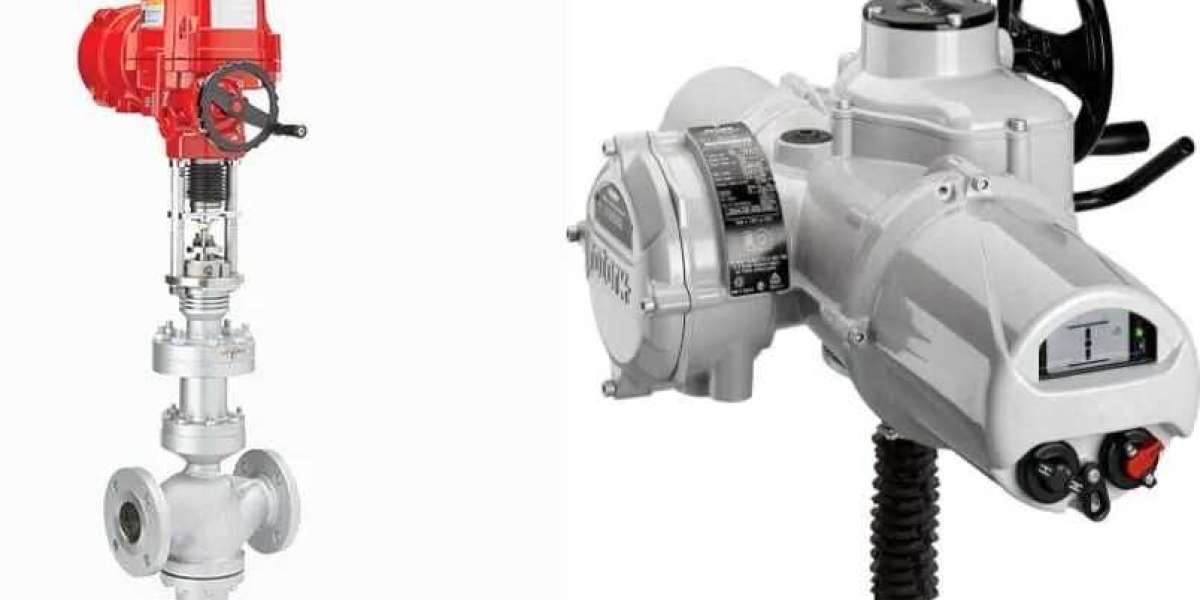Introduction
We are a leading control valve manufacturer in China, providing high-quality valves and control actuators customized to meet a wide range of industrial requirements.
Electric valve actuators play a crucial role in industrial automation by enabling remote, precise control over valves within complex fluid systems. By converting electrical energy into mechanical motion, these actuators regulate the flow of liquids, gases, or other substances through pipelines and process equipment. This article explores the fundamentals of electric valve actuators, how they work, and important factors to consider when selecting the right actuator for your application.
What is an Electric Valve Actuator?
An electric valve actuator is a device that uses an electric motor to adjust a valve’s position. The motor converts electrical energy into mechanical force to open, close, or modulate valves, thereby controlling fluid flow. Widely applied across industries such as water treatment, oil and gas, chemical processing, and power generation, electric actuators are essential where automation, precision, and safety are paramount.
Commonly paired with ball, gate, butterfly, and globe valves, electric actuators automate valve operations to reduce manual intervention, improving speed, reliability, and safety in system control.
How Do Electric Valve Actuators Work?
Electric valve actuators operate through a series of coordinated steps involving key components:
Receiving a Control Signal:
The actuator is linked to a control system that sends electrical signals instructing the actuator to adjust the valve position. These signals may be simple on/off commands or variable signals for precise flow modulation.Converting Electrical Energy:
Once the signal is received, the actuator’s electric motor activates, converting electrical energy into mechanical movement. This drives internal mechanisms such as gears or screws to achieve the desired valve position.Adjusting the Valve Position:
The motor’s rotation moves mechanical components, which then adjust the valve. Quarter-turn valves (e.g., ball or butterfly valves) require a 90-degree rotation for full operation, while multi-turn valves (e.g., gate or globe valves) require multiple rotations to fully open or close.
This process allows for accurate and reliable valve control, which is vital in applications where flow rates must be precisely regulated.
Key Factors to Consider When Selecting an Electric Actuator
Valve Type (Multi-turn, Quarter-turn, or Linear):
Quarter-Turn Actuators: For valves requiring a 90-degree rotation (ball, butterfly valves).
Multi-Turn Actuators: For valves requiring multiple rotations (gate, globe valves).
Linear Actuators: For valves needing straight-line motion (diaphragm, pinch valves).
Service Type (On/Off, Modulating, or Control):
On/Off Service: Simple fully open or fully closed valve positions.
Modulating Service: Partial opening for variable flow control.
Control Service: High precision and responsive flow adjustments.
Fail-Safe Capability:
Actuators with fail-safe functionality automatically return valves to a safe predetermined position (open or closed) during power loss or faults, enhancing safety in critical applications.Torque or Thrust Requirements:
Selecting an actuator with sufficient torque (rotational force) or thrust (linear force) is essential to ensure reliable valve operation without mechanical strain.Actuator Style (Non-Intrusive or Conventional):
Non-Intrusive Actuators: Settings can be adjusted without opening the actuator housing, ideal for hazardous or harsh environments.
Conventional Actuators: Require manual access for adjustments, suitable for stable and safe environments.
Benefits of Electric Valve Actuators
Precision Control: Enable accurate valve positioning for regulated flow rates.
Remote Operation and Monitoring: Facilitate control and status monitoring from centralized control rooms, improving safety and efficiency.
Reduced Maintenance: Fewer moving parts and no reliance on pneumatic or hydraulic systems reduce maintenance needs and costs.
Environmentally Friendly: Electric operation avoids emissions and fluid leaks typical of pneumatic/hydraulic systems.
Enhanced Safety: Reliable operation with fail-safe options safeguards processes involving hazardous or corrosive media.
Applications of Electric Valve Actuators
Oil and Gas: Control flow in pipelines and processing plants.
Water Treatment: Manage water flow and treatment processes in municipal and industrial plants.
Power Generation: Regulate steam, water, and gas flow for efficient power production.
Chemical Processing: Ensure precise fluid control in manufacturing for safety and quality.
Conclusion
Electric valve actuators are indispensable in modern automated systems, offering reliable, efficient, and precise control of valve operations. By understanding their operating principles, selection criteria, and advantages, industries can enhance safety, reduce costs, and optimize process performance. Choosing the right electric valve actuator supports safer, more sustainable, and smarter industrial automation.Know more about Google SEO Directory



